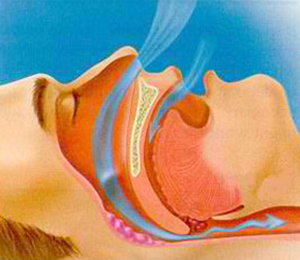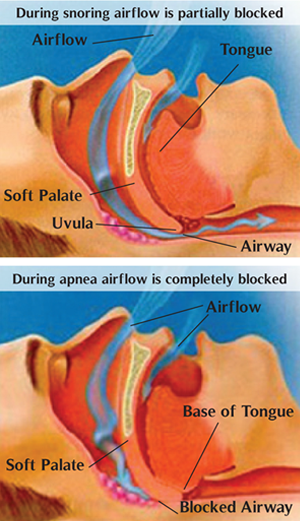
Learn More About Snoring and OSA
Snoring
Snoring is the sound of obstructed breathing during sleep. Approximately two-thirds of adults are affected by snoring. Snoring occurs when the tissue at the back of the roof of the mouth vibrates against the back of the throat. During sleep airway muscles relax leading tissues to vibrate against each other as air passes creating snoring. Additionally, snoring may be a sign of a more serious medical condition which progresses from upper airway resistance syndrome (UARS) to obstructive sleep apnea (OSA).
Obstructive Sleep Apnea
Obstructive sleep apnea (OSA) is a disease of the anatomy. People suffering from sleep apnea have a narrowed airway. During sleep, an apneic’s airway collapses blocking air into the lungs. This obstruction leads to reduced oxygen to the brain and body. A person suffering with OSA will additionally have disrupted and fragmented sleep. Although an individual may not wake during sleep the brain is aroused repeatedly to tell the body to breathe. This cyclical action of disturbed sleep may results in a number symptoms including: excessive daytime sleepiness, loud snoring, restless sleep, pauses in breathing, irritability, difficulty concentrating, and poor memory.
Health conditions associated with sleep apnea
- Ischemic heart disease
- Heart attack
- Irregular heartbeats
- Stroke
- High blood pressure
- Cardiovascular problems
- Diabetes
- Obesity
- Learning and memory problems
- Sexual dysfunction
- Depression
- And more
Safe OSA Treatments
A number of medical interventions are available for the treatment of sleep apnea. Pressure devices act as pneumatic splints to keep the airway from collapsing and include continuous positive airway pressure systems and bi-level positive airway systems. A variety of oral appliances have been developed which mechanically hold the airway open, preventing collapse.
OSA Treatments
- Nonsurgical OSA Treatments
- Behavior Modification
- PAP Therapy
- Oral Appliance Therapy
- Combination Therapy
Surgical OSA Treatments
- Tracheotomy
- Somnoplasty
- Pillar Inserts
- Maxillomandibular Advancement
- Genioglossal advancement
- Tonsillectomy
- Uvulopalatopharyngoplasty (UPPP)


